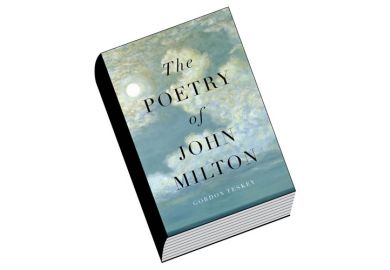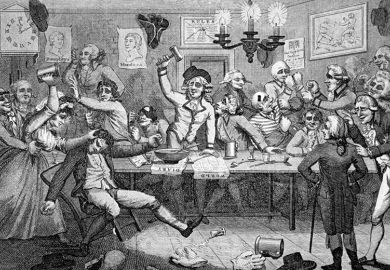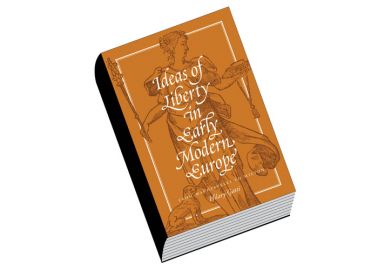“I have eaten the plums that were in the icebox”: a Post-it note on the fridge door. But “I have eaten/the plums/that were in/the icebox”: the first stanza of William Carlos Williams’ poem This is just to say, a poignant meditation on guilt, betrayal and a key text of the Imagist movement. Poetic essence here seems to be in the eye of the beholder, but ’twas not ever thus, and, in her opening salvo, Rebecca M. Rush claims of early modern poetry that “The rejection of rhyme is not simply a matter of personal taste or generic necessity, but an act of liberation that will echo across England.”
This is a compelling read; Rush draws on a plethora of contemporary poetic handbooks, writers’ remarks in letters and poems about their own choices of poetic form and her own superbly microscopic close readings. She grippingly relates what appear to be trivial matters of literary form to some of the paramount religio-political struggles of the day.
Key to her recognition of rhyme’s significance is her appreciation of the period as one of analogy – where divinity is manifest in the diurnal: poets “endeavor to build bridges between mind and world, verse and universe”. The music of the spheres, God’s creative harmony, can be glimpsed in the concord of His creation. For John Milton, “immortal verse” will untwist “all the chains that tie/The hidden soul of harmony”.
But it is not as simple as rhyme revealing concealed celestial coordination. In fact, in the case of John Donne’s rhyming couplets, Rush suggests he is revisiting the iambic pentameter of Chaucer’s The Canterbury Tales, with its “merry, light, and vulgar” overtones. In the 1590s, the couplet was associated “with unpretentious poetry and liberty of thought”, a world away from Edmund Spenser’s intricate rhyme schemes, which gesture towards lovers’ “voluntary self-yielding and mutual captivity”. Characteristically, it is Ben Jonson who reforms Donne, finding “a middle way between the licentiousness of the Elizabethan couplet poets and the slavishness of the [Spenserian] sonneteers”. Jonson’s “formal and constrained” country house poems are directed towards aristocratic patrons rather than Donne’s backslapping “discourse among young men”.
Unsurprisingly, it is in Milton’s work where rhyme and prosody are most seriously weighed up. It is perhaps ironic that during his pamphleteering days, when he is championing freedom of conscience and religious liberty, Milton is drawn to the Italian sonnet form – more intricate and constrained than its English offshoot. But later in his career, the rejection of rhyme is a decision in line with his earnest morality. In his headnote to Paradise Lost, Milton thunders: rhyme is “the invention of a barbarous age, to set off wretched matter and lame metre”. Rush declares that royalist poets had embraced “the prerational charms of rhyme’s chime”, so that Milton had little choice but “to eliminate it altogether”.
Any account of early modern poetry from Spenser to Milton that omits the period’s greatest narrative poet and sonneteer, Shakespeare, is shooting itself in the foot, but what is here is a subtle, thoughtful and well-supported account of the ideological implications of poetic form.
Peter J. Smith is reader in Renaissance literature at Nottingham Trent University.
The Fetters of Rhyme: Liberty and Poetic Form in Early Modern England
By Rebecca M. Rush
Princeton University Press, 304pp, £34.00
ISBN 9780691212555
Published 1 June 2021
POSTSCRIPT:
Print headline: When freedom lay a metre away
Register to continue
Why register?
- Registration is free and only takes a moment
- Once registered, you can read 3 articles a month
- Sign up for our newsletter
Subscribe
Or subscribe for unlimited access to:
- Unlimited access to news, views, insights & reviews
- Digital editions
- Digital access to THE’s university and college rankings analysis
Already registered or a current subscriber?








